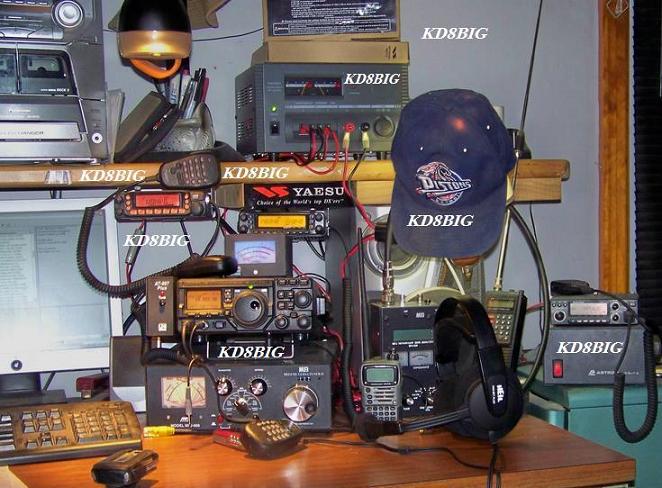Thursday, December 20, 2012
Friday, December 14, 2012
MX-P50A- A HF Power Amplifier for QRP Transceivers
MX-P50A hf power amplifier for QRP transceivers. Can be used both as a base and mobile unit, Extremely Small Compact and light weight, Full integration with the FT-817 using the supplied interface cable.
The amplifier incorporates various protection circuits such as high VOLTAGE,front mounted LED display.
This amplifier can be successfully used with other QRP rigs such as the ICOM IC-703(and Elecraft KX3), though automatic band switching will not be available and the band must be manually selected via the front band select switch.
Specifications:
Frequency (Band) Range : 80m 40m 20m-17m 15m-10m
Operating Modes : SSB CW AM RTTY and FM-Reduced duty cycle
Rf input : 5W
Out power : 50/60W
Band mode : AUTO/Manual
Power requirement : 13.8V 8A,(Cable Color Polarity Ж RED “+” BLACK “-”)
Cooling method:passive air cooling
Antenna connector : SO-239 50Ω
Size : 15/13/5 (cm) D/W/H
Weight : 1.2KG
Package list:
1x MX-P50A
1x Power cord
1x for FT-817ND ACC control cable
Price: $140 USD
source
http://www.12got.com/product/10805156121/MX-P50A+FT-817+IC-703+HF+amplifier+KX3+shortwave+shortwave+power+amplifier+power+amplifier
Thursday, December 13, 2012
100 Years of Amateur Radio
Irving Vermilya, 1HAA, later W1ZE, became the first licensed amateur in the USA being issued Certificate of Skill #1 and is known for all time as Amateur Number One. A number of other amateurs followed suit and rather than seeing amateur radio die out as the Law's authors obviously intended, amateur radio began to flourish with a combination of adopting new technology (Edwin H. Armstrong invented the regenerative receiver in September 1912) for reception and later transmitting (CW emissions became feasible after the World War) along with organizing message relay routes. Amateurs led the way finding that the wavelengths shorter than 200 meters were not useless through the new technologies and, by the early 1920s, a declining solar cycle that enabled communications not only for transcontinental paths, but intercontinental as well.
A century later we enjoy this hobby of amateur radio precisely due to the unintended consequence of a law designed to kill amateur radio that did not state its intention exactly and instead allowed it to live and thrive for 15 years! In 1927 more comprehensive radio legislation was enacted and in 1934 the Communications Act created the FCC that we know today.
For more information visit the United States Early Radio History site by Thomas H. White. Thomas' site is not limited to amateur radio, however, and is quite comprehensive on a lot of radio topics. The ARRL publication, 200 Meters and Down by Clinton B. Desoto documents much of the early amateur radio history. An article by David Newkirk, ex WJ1Z, now W9VES, The Coming of The Law (available to ARRL members), published in the November 1993 issue of QST also documents the forces behind the enactment of the Radio Law of 1912 and how radio amateurs responded to it. The December 2012 issue of CQ has The Radio Act of 1912: A Century of Radio Regulation and Licensing by Rich Moseson, W2VU, providing another perspective on this red letter day. Certainly, more articles on this topic have been published over the years and make for good reading.
As of December 13, 2012 amateur radio will officially be 100 years old complete with examinations and licenses. Happy anniversary!
http://forums.qrz.com/showthread.php?371663-A-century-of-amateur-radio-licensing-December-13-2012&highlight=1912
Wednesday, December 12, 2012
SWPC Product Announcement
Two new, experimental forecast products are now available, the 3-Day Forecast and the Forecast Discussion, both produced twice daily at 0030 and 1230 UTC. The 3-Day Forecast is a concise, one-page summary using NOAA Space Weather Scale terminology and the Forecast Discussion provides detailed information covering observations and forecast rationale tailored for the user requiring in-depth, scientific information.
These products are available in the Data and Products section of the website at http://www.swpc.noaa.gov/ftpdir/latest/three_day_forecast.txt and http://www.swpc.noaa.gov/ftpdir/latest/forecast_discussion.txt, respectively. Users can also subscribe to these products in the Product Subscription Service under the Forecasts and Summaries product category.
Feedback on these products is welcomed through January 11th. Please submit feedback to: www.nws.noaa.gov/survey/nws-survey.php?code=3DSWF (3-Day Forecast) and www.nws.noaa.gov/survey/nws-survey.php?code=SWFD (Forecast Discussion).
These two products will supplement the existing product suite and no current products will be discontinued at this time.
HOW TO READ PROPAGATION NUMBERS
The A index [ LOW is GOOD ]
- 1 to 6 is BEST
- 7 to 9 is OK
- 11 or more is BAD
Represents the overall geomagnetic condition of the ionosphere ("Ap" if averaged from the Kp-Index) (an average of the eight 3-hour K-Indices) ('A' referring to amplitude) over a given 24 hour period, ranging (linearly) typically from 1-100 but theoretically up to 400.
A lower A-Index generally suggests better propagation on the 10, 12, 15, 17, & 20 Meter Bands; a low & steady Ap-Index generally suggest good propagation on the 30, 40, 60, 80, & 160 Meter Bands.
SFI index [ HIGH is GOOD ]
- 70 NOT GOOD
- 80 GOOD
- 90 BETTER
- 100+ BEST
The measure of total radio emissions from the sun at 10.7cm (2800 MHz), on a scale of 60 (no sunspots) to 300, generally corresponding to the sunspot level, but being too low in energy to cause ionization, not related to the ionization level of the Ionosphere.
Higher Solar Flux generally suggests better propagation on the 10, 12, 15, 17, & 20 Meter Bands; Solar Flux rarely affects the 30, 40, 60, 80, & 160 Meter Bands.
K index [ LOW is GOOD ]
- 0 or 1 is BEST
- 2 is OK
- 3 or more is BAD
- 5 is VERY VERY BAD
The overall geomagnetic condition of the ionosphere ("Kp" if averaged over the planet) over the past 3 hours, measured by 13 magnetometers between 46 & 63 degrees of latitude, and ranging quasi-logarithmically from 0-9. Designed to detect solar particle radiation by its magnetic effect. A higher K-index generally means worse HF conditions.
A lower K-Index generally suggests better propagation on the 10, 12, 15, 17, & 20 Meter Bands; a low & steady Kp-Index generally suggest good propagation on the 30, 40, 60, 80, & 160 Meter Bands.
Terms of Service
I am not responsible for any thing that happens to your mental health, computer and all personal property because you visited my site.
This site is a collection of some things sent to me by e-mail, obtained from other blogs and the internet. If there is a picture or quote that is copyrighted to you let me know and I will remove your item .
Thoughts expressed in my blog are just that . I give My Opinion on the many events, products and how too, reported by the media and other web-sites.
Do not use this blog site to obtain weather events or disasters information. What I post may not be correct. Always get information from the proper media, weather (NWS)(NOAA)
Pacific Tsunami Warning Center and USGS sites














